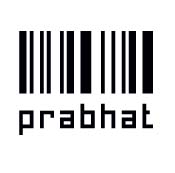The User Interface
Windows 7 features a new version of the user interface introduced in Vista, but more streamlined with a number of visual elements stripped down to a more simple form. For example, the task bar now features only the icon of the open application, rather than a big button containing both the name and the icon of the application. Also, the gadget sidebar has also been dropped in favour of letting you free float gadgets wherever you want on the desktop.
It will add support for multi-touch technology, similar to that found in Microsoft's Surface Tabletop computer. The Windows 7 multi-touch touchscreen interface is being regarded as one of the most interesting new features of the next-generation Windows operating system. It allows multiple fingers to be used together for a unique way to control specific applications like photo-editing and more.
Features
Windows 7 is at the centre of a connected environment. It will also integrate tightly with Microsoft’s online services and hosted software products, such as lightweight versions of Office, Hotmail, Messenger and online storage. The aim is to make consumer and end user cloud computing service access seamless between the client and the online version of the product or service.
Windows 7 will be smaller, lighter, and faster than Windows Vista. Windows 7 is being developed in a completely new way. Windows 7 isn't a huge departure for Microsoft. It's built on the Vista kernel and device driver, so the existing device drivers will work on it.
Windows 7 is all about choice, and about enabling the user to easily extend and customize their experience, with the internet at the heart of what they do, whether they are working online or offline.
This will support for solid state drives and using GPUs for general purpose applications. The "ribbon" interface in Office 2007 will find its way into many Windows applications. Windows 7 also introduces a new networking API with support for building SOAP-based Web services in native code. The hated User Access Control (UAC) systems will be overhauled to make it a lot smarter. It couldn't get much dumber, really. Microsoft estimates it will go from 775,000 unrecognized applications to 168,000 applications, so it will stop asking you for approval every time you make a move.
Some Other Changes The "Essentials" applications will link up with online services, including Web-based e-mail and photo-sharing tools from Microsoft and its competitors, such as Google.
Microsoft is also removing significant features from Windows 7:
Microsoft currently plans to ship Windows 7 by early 2010, about three years after Vista.
The War
Microsoft isn't alone in its pursuit of multi-touch controls. Apple's vaunted but slow-selling iPhone utilizes multi-touch controls, and a selection of newer MacBook Pro laptops offers limited multi-touch capabilities in certain Mac OS X applications. For Microsoft, however, Windows 7 multi-touch is a chance to leapfrog the competition, and it builds on work the company pioneered in earlier versions of Windows and in its Surface smart table.
External Links:
The Vienna Site: http://www.windowsvienna.com/
Windows 7 FAQ: http://www.winsupersite.com/faq/windows_7.asp
On WiKi: http://en.wikipedia.org/wiki/Windows_7





2 comments:
See the install screens for Windows 7: http://www.winsupersite.com/win7/win7_m3_install.asp
(The Interactive Install Screenshot Gallery)
Microsoft introduced Windows Server 2008 R2 at the 2008 Professional Developers Conference as the server variant of Windows 7.
A reviewer guide published by the company describes several areas of improvement, notably the inclusion of a number of new virtualization capabilities, reduced power consumption, a new set of management tools, new Active Directory capabilities such as a "recycle bin" for deleted AD objects, a new FTP server, DNSSEC support, and an increase in the number of supported processing cores from 64 to 256. 32-bit processors are no longer supported.
Improvements to the Server Core installation option include the complete removal of the graphical environment from the operating system, and support for the .NET Framework, including ASP.NET applications and Windows PowerShell support.
Performance improvements was a major area of focus for this release; Microsoft has stated that work was done to decrease boot time, improve the efficiency of I/O operations while using less processing power, and generally improve the speed of storage devices, especially iSCSI.
Reference: http://en.wikipedia.org/wiki/Windows_Server_2008_R2#Windows_Server_2008_R2
Post a Comment